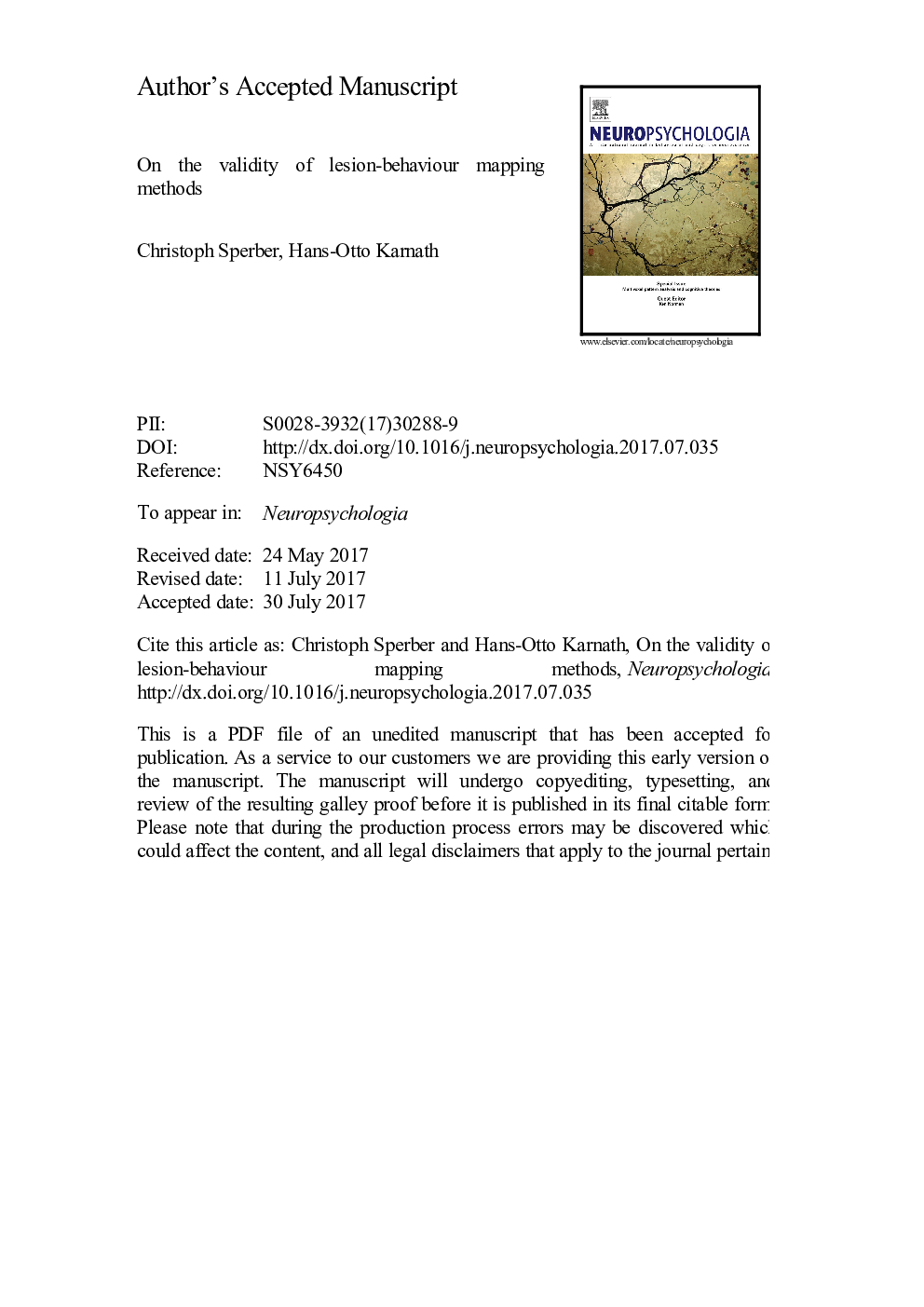| Article ID | Journal | Published Year | Pages | File Type |
|---|---|---|---|---|
| 7317322 | Neuropsychologia | 2018 | 28 Pages |
Abstract
Brain lesion studies have been criticised for producing partly heterogeneous results; especially the validity of statistical voxel-based lesion-behaviour mapping has been discussed. In fact, planning a lesion-behaviour mapping study is associated with many methodological degrees of freedom. In the present review, we argue that not the lesion-behaviour mapping method itself produces heterogeneous results, but rather its heterogeneous or even erroneous application. We outline which methodological pitfalls and trade-offs can affect the results of lesion analyses, addressing behavioural assessment, recruitment of patients, statistical analysis, neuroimaging, and interpretation with brain atlases. Further, we discuss several methods to actually test the validity of lesion-behaviour mapping. Each of these approaches has specific advantages and disadvantages. In combination, they provide valuable tools to answer most empirical questions related to the validity of lesion-behaviour mapping.
Related Topics
Life Sciences
Neuroscience
Behavioral Neuroscience
Authors
Christoph Sperber, Hans-Otto Karnath,
